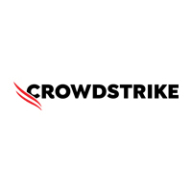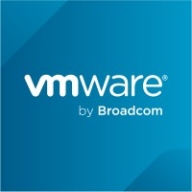

CrowdStrike Falcon and VMware Carbon Black Endpoint are leading competitors in the endpoint security market. CrowdStrike Falcon is superior in features like threat visibility, forensic capabilities, and AI-driven threat detection, while VMware Carbon Black excels in behavioral analysis and granular control.
Features: CrowdStrike Falcon offers threat detection and endpoint visibility, robust EDR capabilities, and comprehensive monitoring via an independent dashboard. It excels in AI and machine learning capabilities. VMware Carbon Black provides alert triage, process monitoring, and behavioral analysis with detailed logs and role-based access control.
Room for Improvement: CrowdStrike Falcon could improve integration with legacy systems, dashboard reporting, and feature bundling. There are opportunities for smoother API connections and sensor visibility. VMware Carbon Black needs better container security, enhanced cloud compatibility, on-demand scan functionalities, and pricing models for SMBs.
Ease of Deployment and Customer Service: CrowdStrike Falcon offers rapid deployment with minimal on-premises setup and is praised for its customer service and support. VMware Carbon Black is recognized for its dedicated account representatives and technical expertise, but faces delays in support response times on weekends.
Pricing and ROI: CrowdStrike Falcon is priced higher but justified by its robust features and ease of use, offering substantial ROI in environments with limited IT resources. VMware Carbon Black provides competitive pricing but includes additional licensing fees. It enhances ROI by reducing operational costs, yet users are more satisfied with CrowdStrike’s straightforward licensing and comprehensive coverage.
CrowdStrike Falcon saves time and offers good value for money, especially for enterprise companies, because it can stop breaches.
It's very easy to deploy without many IT admins, saving time.
On a scale of one to ten, I would rate the technical support as a 10 because they resolve many issues for us.
The CrowdStrike team is very efficient; I would rate them ten out of ten.
They could improve by initiating calls for high-priority cases instead of just opening tickets.
It has adequate coverage and is easy to deploy.
In terms of scalability, I find CrowdStrike to be stable, and I have not encountered any limitations with it.
There's no scalability limitation from CrowdStrike itself, as it just requires agent deployment.
I have never seen instability in the CrowdStrike tool.
We are following N-1 versions across our environment, which is stable.
The biggest issue occurred when every computer worldwide experienced a blue screen.
Simplifying the querying process, such as using double quote queries or directly obtaining logs based on IP addresses or usernames, would be beneficial.
Another concern is CrowdStrike's GUI. It changes annually, making it hard to work and find options.
Threat prevention should be their first priority.
It is expensive compared to SentinelOne, but as the market leader, it is worth it.
The licensing cost and setup costs are affordable.
The solution is a bit expensive.
I can investigate by accessing the customer's host based on the RTR environment and utilize host search to know details for the past seven days, including logins, processes, file installations, malicious processes, and network connections.
The real-time analytics aspect of CrowdStrike performs well because we get all logs in real-time, with no delay, allowing us to take action immediately.
Being an EDR solution, it helps us identify attacks in real-time.
| Product | Market Share (%) |
|---|---|
| CrowdStrike Falcon | 7.9% |
| VMware Carbon Black Endpoint | 1.8% |
| Other | 90.3% |


| Company Size | Count |
|---|---|
| Small Business | 46 |
| Midsize Enterprise | 34 |
| Large Enterprise | 61 |
| Company Size | Count |
|---|---|
| Small Business | 31 |
| Midsize Enterprise | 9 |
| Large Enterprise | 30 |
CrowdStrike Falcon offers comprehensive endpoint protection with real-time threat detection, AI-driven capabilities, and seamless integration with other platforms. Its cloud-native design provides robust security across diverse environments, making it a reliable choice for modern cybersecurity needs.
CrowdStrike Falcon is heralded for features like robust endpoint visibility, threat detection, and AI-driven capabilities. Users value its efficient real-time monitoring, which maintains low impact on performance while offering seamless integration with platforms. The lightweight design, coupled with comprehensive dashboards and automated threat responses, enhances security operations while reducing resource strain. CrowdStrike's cloud-native architecture ensures flexible, always-on protection, making it adaptable to a wide range of environments. However, improvements can be made in log management, compatibility with diverse operating systems, and integration with third-party technologies. Users also seek more robust reporting features, fewer false positives, and better support for legacy systems. Enhanced policy application, AI capabilities, and extended on-demand scanning are desired, while pricing and technical support responsiveness are concerns.
What are CrowdStrike Falcon's key features?CrowdStrike Falcon is implemented widely in industries relying on robust endpoint protection for monitoring, securing endpoints, forensic analysis, and malware detection. Its cloud-based AI capabilities ensure comprehensive security across devices, making it a preferred choice for networks, servers, and workstations globally. The efficient management of security threats and compliance with regulations is achieved with minimal resource consumption.
VMware Carbon Black Endpoint enhances endpoint security with its robust EDR, threat detection, and live response features. The cloud-based architecture supports remote management and easy setup while behavioral monitoring and dynamic grouping minimize security risks.
VMware Carbon Black Endpoint is designed for those seeking comprehensive endpoint protection. With its cloud-based deployment, organizations experience streamlined remote control and simplified rollout processes. Its behavioral monitoring, incident response capabilities, and firewall integration deliver advanced security measures. Although it addresses many security challenges, areas like manual alert management, on-demand scanning, and integration with systems like AlienVault USM require refinement. Improved UI, EDR components, and flexible pricing models would enhance user satisfaction. On-premise deployment infrastructure and compatibility issues with some operating systems need attention. Enhanced reporting, container security, and multi-tenancy support are also essential for fulfilling industry needs. AI-driven analysis and threat isolation empower companies by fostering proactive management.
What are the key features of VMware Carbon Black Endpoint?
What benefits should users look for when evaluating VMware Carbon Black Endpoint?
VMware Carbon Black Endpoint finds extensive application in industries focused on stringent security requirements. Managed security service providers leverage its capabilities to deliver comprehensive protection to multiple clients worldwide. Organizations use it primarily for antivirus protection and incident management, integrating it with their existing security frameworks to strengthen endpoint visibility and real-time threat prevention. Its advanced detection and application control features make it a preferred choice in industries that prioritize robust security measures. However, it requires improvements in terms of system compatibility and customization flexibility to better serve diverse industry environments.
We monitor all Endpoint Protection Platform (EPP) reviews to prevent fraudulent reviews and keep review quality high. We do not post reviews by company employees or direct competitors. We validate each review for authenticity via cross-reference with LinkedIn, and personal follow-up with the reviewer when necessary.